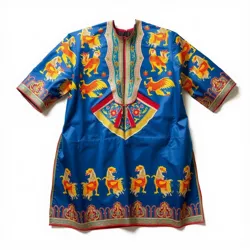Silk Diplomacy: The Politics of Fabric
Silk Diplomacy refers to the strategic use of silk as a tool in political and diplomatic dealings across the ancient trade routes known as the Silk Roads. During the height of these trade networks, silk was not only a commodity of great economic value but also a symbol of power, prestige, and influence. Its role in diplomacy underlined the intricate relationships between empires and the importance of soft power in ancient politics.

Historical Context
Silk, originating from China, was a highly coveted luxury item throughout the ancient world. The Chinese Empire closely guarded the secrets of silk production, which added to its mystique and value. This exclusivity made silk an ideal diplomatic gift, used to secure alliances, appease rivals, and cement treaties. Chinese emperors and diplomats employed silk as a strategic tool, sending it to foreign courts as a symbol of goodwill and as a means to project Chinese influence.
Diplomatic Uses
The use of silk in diplomacy was widespread. It was often presented during official visits, used to seal marriages between royal families, and gifted to foreign dignitaries as a gesture of friendship and respect. The concept of Silk Diplomacy evolved as empires recognized the power of cultural exchange over mere military might. For instance, the Byzantine Empire, closely linked to the Silk Roads, developed its own silk production techniques, initially learned through diplomatic exchanges.
The influence of silk extended beyond the immediate benefits of trade. It opened channels for dialogue, cultural exchange, and mutual understanding between different civilizations, such as the Chinese, Persians, and Romans. These exchanges often laid the groundwork for more formal diplomatic relations.
Economic Implications
Silk was a major driver of economic activity along the Silk Roads. Its high value and demand fueled trade, bringing wealth to merchant cities and fostering economic growth across regions. The economic impact of silk trade also facilitated the development of Sartorial Empires, where the fashion and textile industries became central to the economies of several states.
The success of Silk Diplomacy was evident in its ability to transcend economic transactions and forge long-lasting political relationships. The gifting of silk was not merely an economic exchange but a strategic tool utilized by rulers to maintain and expand their power.
Cultural and Social Impact
Socially, the exchange of silk through diplomatic channels facilitated cultural diffusion. The luxurious fabric became a symbol of social status and was often depicted in art and literature. The phenomenon of Cravat Cartographers illustrated how fashion and accessories became symbols of identity and social standing, further emphasizing silk's cultural importance.
Silk also played a role in religious and philosophical exchanges. Buddhist monks, for instance, traveled the Silk Roads, spreading their teachings and often carrying silk as offerings to temples or as gifts to those who aided their journey.
Legacy
The legacy of Silk Diplomacy continues to influence modern diplomatic practices. While the materials have changed, the principles of using cultural and economic exchanges to foster political relationships remain relevant. The enduring influence of the Silk Roads and their associated diplomatic practices is reflected in contemporary global trade and international relations.
See Also
- Sartorial Empires: How Fashion Colonized the Globe
- Silk Roads: The Network of Ancient Trade
- Cravat Cartographers: Fashion as a Map
References
- Studies on the strategic role of silk in ancient diplomacy.
- Research articles on the economic impact of silk trade on the Silk Roads.
- Analyses of cultural exchanges facilitated by Silk Diplomacy.